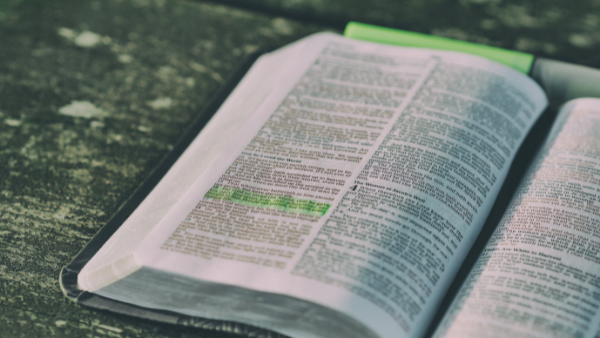By Jeffery M. Leonard, Ph.D.
Associate Professor of Biblical & Religious Studies, Samford University
DOES IT REALLY MATTER WHICH ‘TRUTH’ I BELIEVE?
John 3:19–21; 8:31–36
The Gospel of John stands out from Matthew, Mark and Luke in a host of ways. Like Mark, John skips over the stories surrounding Jesus’ nativity, but John also leaves out quite a few other events from Jesus’ life.
John doesn’t write about Jesus’ baptism, his temptation in the wilderness, his revelation on the Mount of Transfiguration or the various stories about casting out unclean spirits. John includes lots of sermons, but he doesn’t include a single parable.
Matthew, Mark and Luke have a great deal to say about the coming Kingdom of God and refer to it more than 100 times; surprisingly, John only mentions the Kingdom five times. But if Jesus doesn’t say much about the Kingdom in John, He has a great deal more to say about Himself.
In Matthew, Mark and Luke, Jesus only uses the word “I” 36 times. In John, he says “I” a full 118 times. Many of these statements — 46 of them — take the form of Jesus’ famous “I am” statements — “I am the Bread of Life,” “I am the Light of the world” and “I am the Way, the Truth and the Life.”
We don’t have to look far to define the logic behind what John includes and what he omits. In the last verse of the book, John says that if everything Jesus said and did were written down, “not even the world itself could contain the books that would be written” (21:25).
The things John did include, he says he included “so that you may believe that Jesus is the Messiah, the Son of God, and that by believing you may have life in His name” (20:31).
Truth is revealed in the light of Jesus. (3:19–21)
John’s Gospel is not one for half measures. Even more starkly than the other Gospels, John makes a sharp distinction between those who are of the world and those who are not.
One of the key images John uses to mark this distinction is that of light and darkness. Nearly half of the uses of the Greek word for light are found in John and the related letter of 1 John. All but two of the uses of the Greek term for darkness in the New Testament are found in just these two books.
The truth of Jesus sets us free to live. (8:31–32)
John’s description of the gospel is one in which the light of Christ has come into the world, and it remains to those who see that light to respond by either embracing the light or rejecting it.
Overwhelmingly, the word John uses to describe that response of embracing the light is “believe.” Nearly 100 times in John’s Gospel — far more than in any other New Testament book — this word “believe” is used to describe our response to Jesus.
The truth of Jesus sets us free from sin. (8:33–36)
Belief, according to John, is not merely a matter of assent to a set of facts or theological truths.
To believe is to embrace the light of Christ, to cast oneself upon Jesus in a relationship of dependence and trust. Belief here is also not a one-sided affair. With belief, John tells us, comes freedom. Where we were merely slaves to our own passions, belief in Christ sets us free from slavery and makes us “free indeed.”



Share with others: